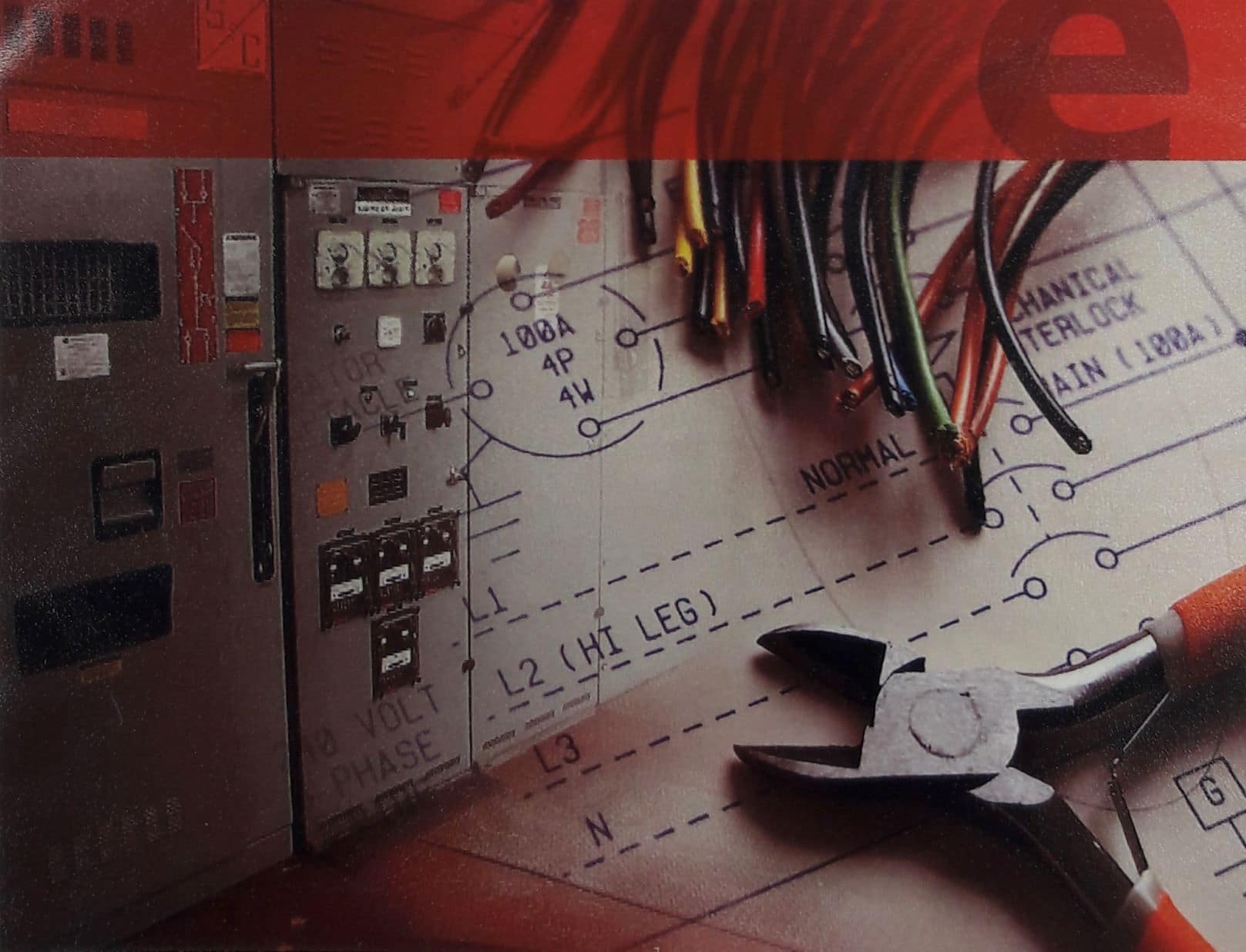Two Significant Changes Occurred in the 2020 National Electrical Code
They revolve around required space for entrance and egress, as well as requirements for panic door hardware. We will discuss both of these changes, located in Article 110.26, Spaces About Electrical Equipment.
Entrance and Egress Requirements - 110.26(C)(2)
When the electrical room includes “large equipment,” entrance and egress requirements begin to get very specific. “Large equipment” is defined as any equipment that has a rating of 1200 amps or more and measures over 6 feet wide. The new addition in 2020 also makes the “large room” concept expand to include service disconnecting means that have been installed as per 230.71. These delineations are important to understand to apply the entry/egress room rules.
If you have a room that meets the above requirements, 110.26(C)(2) states that these electrical rooms must have an entrance/egress that is at least 24 inches wide and 6.5 feet tall at EACH end of the working space. Working space requirements appear in Table 110.26(A)(1).
Another addition appearing in 2020 here is that the equipment doors must not impede (block) the entry/egress of the working space. I have been at sites where this exact condition exists. I have asked questions during audits about the blocked escape route in the case of an arc flash or equipment fire.
Now, there is legal enforcement available to prevent this poor design for new equipment or alterations of existing rooms. Realize that the “each end’ requirement for entry/egress into these spaces can be reduced to only one IF the requirements in 110.26(C)(2)(a) or (b) can be met. These two subsets allow unobstructed access or a space where the requirements in Table 110.26(A)(1) are doubled to have only one entry/egress. The NEC gives one further clarification for the requirement in (b): the measurement from the nearest edge of the large equipment is not less than that listed in the aforementioned table.
Panic Hardware - Article 110.26(C)(3)
The second significant change in Spaces About Electrical Equipment involves the actual door hardware. Personnel doors in electrical rooms with equipment rated 800 amps or more that are located less than 25 feet from the nearest edge of the working space must open in the direction of egress. The door must be equipped with listed panic hardware or listed fire exit hardware. The wording after “or” is the new addition in 2020. The informational note directly under 110.26(C)(3) mentions UL 305 for panic hardware and UL 10C for fire doors.
We will do a very quick summary of those very different options now allowed for electrical room escape paths.
Panic Hardware vs. Fire Exit Hardware
Panic hardware is just like it sounds. Panic hardware is an exit device that has been tested to UL 305 requirements and allows simple egress by use of a crash bar/push bar/ etc. The bar unlatches the door’s latching mechanism on both ends, allowing the door to swing freely in the direction of egress.
Fire exit hardware differs in that the device has been evaluated by UL 10C and UL 305 for both panic and fire exit hardware. Fire doors require positive latching and do not have mechanical dogging like a panic latch does.
The dogging feature of panic hardware allows the latch’s dogs (the items that engage into the latch strike, usually called the strike plate) to be temporarily pulled back by an Allen wrench or similar device. This is usually done for convenience in high-traffic areas for ease of entry and exit, typically during a business’s open hours. Upon closing, the latch dogs are released, and the door will automatically lock once it swings into the closed position. This type of latch locking feature is not allowed on a fire-rated door.
The International Building Code (IBC ) and NFPA 101 (Life Safety Code) both mention panic hardware and fire exit hardware in their respective regulations.
In the 2020 NEC update, either option – panic hardware or fire exit hardware – is allowed for personnel doors in electrical spaces. Just be sure to meet any applicable life safety or IBC requirements in your area.
On a final note, please keep these areas clear of obstructions at all times. These doors maintain specific egress requirements for a reason. Boxes, spare parts, or other items are not allowed to impede the escape route for any reason.
Requirements for Electrical Installations - Article 110
Article 110 contains the general requirements for electrical installations. Consider this article as the main hub, so to speak, for all generic things electrical. If you ever have a question on topics such as allowed electrical equipment (listing and labeling questions), interrupt ratings of general electrical equipment, equipment mounting requirements, and similar issues, always start your search in Article 110.
Part II of this Article covers spaces about electrical equipment for 1000 volts and less. Following suit, Part III addresses the same for equipment “over 1000 volts.”
We're Here to Help with Electrical Safety
Let us know if you have any National Electrical Code questions or need training on the NEC. We specialize in industrial application of the NEC. Send your questions to us online or call the office at (502)-716-7073.
Stay safe out there!


Greetings e-Hazard,
Thank you for your contribution to the electrical installation safety procedure knowledge.
I have learned a school of knowledge from your service to the public.